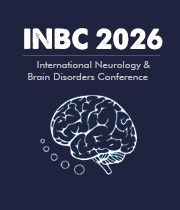Title : Digital health narratives in neuro-oncology: evaluating educational quality through NLP-augmented discern analysis
Abstract:
Background: Online visual health content is a widely used source of medical information, especially in emotionally charged fields like neuro-oncology, where patients and caregivers often turn to digital platforms for accessible education. However, the unregulated nature of such platforms raises significant concerns about content credibility, accuracy, and the potential for health misinformation—particularly when addressing topics involving prognosis and treatment decisions.
Objective: This study aimed to systematically evaluate the quality, readability, and educational value of widely viewed online visual content on brain tumors using a hybrid methodology combining natural language processing (NLP) with the validated DISCERN tool.
Methods: We performed a cross-sectional analysis of 30 English-language brain tumor videos meeting the following inclusion criteria: ≥5,000 views, ≥2 minutes in length, uploaded within the past 3 years. Metadata (view count, upload date, source category) and full transcripts were collected. Videos were classified into five source types: medical professionals, health organizations, patient testimonials, media/news, and other. Readability was assessed using the Hemingway Editor; sentiment polarity was measured using TextBlob. Latent Dirichlet Allocation (LDA) topic modeling was used to identify underrepresented discussion areas (e.g., prognosis, palliative care). The first eight DISCERN items were applied in a two-step scoring pipeline involving AI-assisted scoring and human verification.
Results: Median view count was 58,200 (IQR: 21,945–187,900); readability ranged from Grade 7 to postgraduate level (median: 10.4). DISCERN scores ranged from 12 to 36 (mean: 26.3 ± 5.7), with no video achieving an “excellent” rating. Medical professionals had the highest average DISCERN scores (31.5), while patient-generated content had the lowest (20.1), often lacking citation of sources or balanced treatment perspectives. Pearson correlation analysis revealed no statistically significant relationship between DISCERN scores and readability (r = 0.14, p = 0.46) or view count (r = –0.07, p = 0.69). Topic modeling revealed a consistent omission of palliative care, survivorship, and prognosis-related discussions.
Conclusion: Online visual health content offers both accessibility and risk in neuro-oncology education. While professionally produced videos tend to offer more accurate and
comprehensive information, they are often less emotionally engaging and attract fewer views. Conversely, highly viewed patient narratives often include unsupported claims. This study underscores the need for scalable content evaluation pipelines, such as hybrid NLP-DISCERN methods, and highlights the limitations of existing tools not optimized for video-based education. Our findings reveal critical content gaps and reinforce the ethical responsibility of creators and platforms to prioritize accuracy, transparency, and digital health literacy in high-stakes domains like neuro-oncology.




